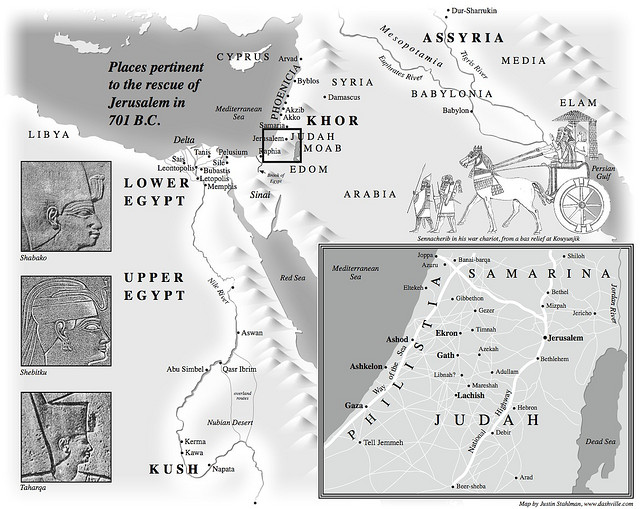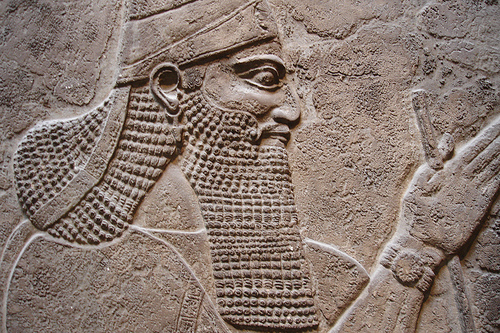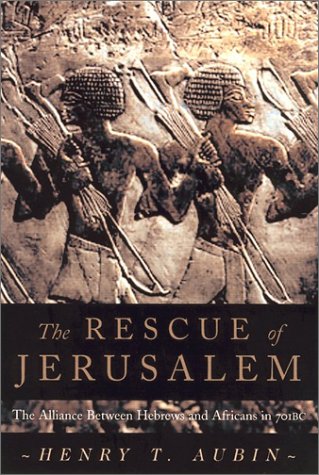It looks like you're using an Ad Blocker.
Please white-list or disable AboveTopSecret.com in your ad-blocking tool.
Thank you.
Some features of ATS will be disabled while you continue to use an ad-blocker.
share:
Well I think irrefutable "Archaeological" evidence will appear in the end days. what then? :innocent:
originally posted by: Marduk
God prophesied. Does he count? Annointed has more than one meaning.
You only have hearsay evidence that he existed at all, so no, he doesn't count, unless you can produce him
edit on 6-12-2015 by
stormbringer1701 because: (no reason given)
originally posted by: dashen
a reply to: Marduk
your argument is the only thing crumbling.
His cities, public works projects, and Written history survive to this day.
Seals, relics, cities, foreign mentions of him, stelae and countless archeological digs just isnt enough for some people.
No,
this is everything
Two archaeological finds, the Tel Dan Stele and the Mesha Stele, have direct bearing on the question of the existence of a historical David. The first of these is an Aramean victory stele (inscribed stone) discovered in 1993 at Tel Dan and dated c. 850–835 BCE: it contains the phrase ביתדוד (bytdwd), which has been interpreted as "House of David".[22] The Mesha Stele from Moab, dating from approximately the same period, may also contain the name David in line 12, where the interpretation is uncertain, and in line 31, where one destroyed letter must be supplied, but apparently no other letter produces a word that makes sense in the context.[23]
The evidence from surface surveys indicates that Judah at the time of David was a small tribal kingdom.[24] The Bronze and Iron Age remains of the City of David, the original urban core of Jerusalem identified with the reigns of David and Solomon, were investigated extensively in the 1970s and 1980s under the direction of Yigal Shiloh of the Hebrew University, who failed to discover significant evidence of occupation during the 10th century BCE.[25] In 2005 Eilat Mazar reported the discovery of a Large Stone Structure which she claimed was David's palace,[26] but the site is contaminated and cannot be accurately dated.[27]
In December 2014, archaeologists from Mississippi State University announced the discovery of six bullae which suggests that some type of government activity was being conducted in the 10th century, and thus support the existence of David, although the bullae do not mention David or Jerusalem or Judah or Israel and there is no way of knowing who produced them or for what purpose.[28]
Not a single mention of King David anywhere, except the Bible
Clearly then you don't have a clue what you're talking about
Have you actually read the Bible...
Interesting find, it is not unusual for Levantine kings including Israelite upper classes to reflect Kemetian and Mesopotamian influences Take for
example the sacred chest or ark complete with winged guardians and compare with what is known as the ark of the covenant,so Ashura Mazda combined with
an Ankh on a seal is not out of place for the area.
a reply to: Marduk

Jerusalem Israel museum.
It all hinges for now on whether the Tel Den stele is a forgery or not.
Tel Dan Stela - Near Eastern Languages and Cultures
www.nelc.ucla.edu...
A translation of the artifact,scroll down to pg 3 and 4.

Jerusalem Israel museum.
It all hinges for now on whether the Tel Den stele is a forgery or not.
Tel Dan Stela - Near Eastern Languages and Cultures
www.nelc.ucla.edu...
A translation of the artifact,scroll down to pg 3 and 4.
edit on 6-12-2015 by Spider879 because: (no reason given)
originally posted by: Spider879
a reply to: Marduk
Jerusalem Israel museum.
It all hinges for now on whether the Tel Den stele is a forgery or not.
Tel Dan Stela - Near Eastern Languages and Cultures
www.nelc.ucla.edu...
A translation of the artifact,scroll down to pg 3 and 4.
Errr, again, you are presuming at some point that I have said David is not historical
I haven't
originally posted by: dashen
a reply to: Marduk
you are saying he was a small potatoes chieftain king of Judah, whereas he was the King of 12 Israelite Tribes numbering in the millions
Yes, because the Archaeology says he was a small potatoes chieftain king of Judah and the bible claims he was the King of 12 Israelite Tribes numbering in the millions
Do you see the difference, if you expect me to believe what the bible says, then you'd better start producing the evidence.
And no, the bible isn't evidence of its own claims, if I said to you, I am king of the world and you asked for evidence and the only evidence I can give you is me saying "I am king of the world", how convinced would you be.
Also, if you want to go down this route, then I suggest you start a new thread, because this discussion is way off topic
originally posted by: zazzafrazz
a reply to: Marduk
Do you think Hezekiah was small potatoes also?
I don't know enough about him...
a reply to: Marduk
Fair enough.
I'd say Jerusalem was more like a city state and the Judean towns were part of a fairly established city state 'kingdom'. The scattered tribes (it is recorded) he requested the join to celebrate passover together.
The Sennacherib's Prism found in the foundations of the Ninevah place is a dedication to their invasion and siege of Jerusalem under Hezakiahs rule where he paid tribute to Sennacherib, but two different amounts are recorded, the smaller amount in the Talmud and a larger amount in cuneiform.
en.wikipedia.org...
There is also the Lachish Relief illustrating his revolt against the Assyrians.
Either way the recordings suggest that he/Judea was important to make it into the palace stele and records .
Hezekiah is a interesting fellow, this find is wonderful
Fair enough.
I'd say Jerusalem was more like a city state and the Judean towns were part of a fairly established city state 'kingdom'. The scattered tribes (it is recorded) he requested the join to celebrate passover together.
The Sennacherib's Prism found in the foundations of the Ninevah place is a dedication to their invasion and siege of Jerusalem under Hezakiahs rule where he paid tribute to Sennacherib, but two different amounts are recorded, the smaller amount in the Talmud and a larger amount in cuneiform.
The prism records the conquest of 46 strong towns [18] and "uncountable smaller places," along with the siege of Jerusalem where Sennacherib says he just "shut him up...like a bird in a cage,"[11] subsequently enforcing a larger tribute upon him
en.wikipedia.org...
There is also the Lachish Relief illustrating his revolt against the Assyrians.
Either way the recordings suggest that he/Judea was important to make it into the palace stele and records .
Hezekiah is a interesting fellow, this find is wonderful
edit on 6-12-2015 by zazzafrazz because: (no reason given)
originally posted by: Marduk
originally posted by: Spider879
a reply to: Marduk
Jerusalem Israel museum.
It all hinges for now on whether the Tel Den stele is a forgery or not.
Tel Dan Stela - Near Eastern Languages and Cultures
www.nelc.ucla.edu...
A translation of the artifact,scroll down to pg 3 and 4.
Errr, again, you are presuming at some point that I have said David is not historical
I haven't
Relax man I did not presume anything, we were talking of historical evidence outside the Bible which many thought did not exist, the Tel Dan stele which is not without controversy "may" be the only document that does so, if it's not a forgery.
edit on 6-12-2015 by Spider879
because: (no reason given)
originally posted by: Spider879
originally posted by: Marduk
originally posted by: Spider879
a reply to: Marduk
Jerusalem Israel museum.
It all hinges for now on whether the Tel Den stele is a forgery or not.
Tel Dan Stela - Near Eastern Languages and Cultures
www.nelc.ucla.edu...
A translation of the artifact,scroll down to pg 3 and 4.
Errr, again, you are presuming at some point that I have said David is not historical
I haven't
Relax man I did not presume anything, we were talking of historical evidence outside the Bible, which many people thought did not exist, the Tel Dan stele which is not without controversy "may" be the only document that does so, if it's not a forgery.
I accept the Tel Dan stele as genuine, while at the same time accepting that a piece of rock which has "House of David" on it, in no way backs up any of the Biblical claims.
a reply to: zazzafrazz

Siege of Lachish, Assyrian relief, Nineveh, British Museum, London
Actually if this is what you are referring to then the invaders were Assyrians coming out of what is now Iraq not Persians who arrived on the historical scene some two centuries later from what is now Iran.
But yes Hezekiah was caught between a rock and a hard place between Kush-ite ruled Kemet expanding into the Levant and Assyria expanding from the east, he was bound to be a vassal of either of the two states in a cold war now gone hot.


King Sennacherib
Vs Taharka then a prince

A good read is this book below.


Siege of Lachish, Assyrian relief, Nineveh, British Museum, London
Actually if this is what you are referring to then the invaders were Assyrians coming out of what is now Iraq not Persians who arrived on the historical scene some two centuries later from what is now Iran.
But yes Hezekiah was caught between a rock and a hard place between Kush-ite ruled Kemet expanding into the Levant and Assyria expanding from the east, he was bound to be a vassal of either of the two states in a cold war now gone hot.


King Sennacherib
Vs Taharka then a prince

A good read is this book below.

edit on 6-12-2015 by Spider879 because: Add content
originally posted by: Marduk
originally posted by: Spider879
originally posted by: Marduk
originally posted by: Spider879
a reply to: Marduk
Jerusalem Israel museum.
It all hinges for now on whether the Tel Den stele is a forgery or not.
Tel Dan Stela - Near Eastern Languages and Cultures
www.nelc.ucla.edu...
A translation of the artifact,scroll down to pg 3 and 4.
Ok fair enough.
Errr, again, you are presuming at some point that I have said David is not historical
I haven't
Relax man I did not presume anything, we were talking of historical evidence outside the Bible, which many people thought did not exist, the Tel Dan stele which is not without controversy "may" be the only document that does so, if it's not a forgery.
I accept the Tel Dan stele as genuine, while at the same time accepting that a piece of rock which has "House of David" on it, in no way backs up any of the Biblical claims.
Ok fair enough.
a reply to: Spider879
fixed,was a mindless typo.
Either way the relief attests to Hezekiahs time.
en.wikipedia.org...
fixed,was a mindless typo.
Either way the relief attests to Hezekiahs time.
Lachish relief[edit]
Part of the Lachish Relief, British Museum. Battle scene, showing Assyrian cavalry in action. Above, prisoners are led away.
Under Rehoboam, Lachish became the second most important city of the kingdom of Judah. During the revolt of king Hezekiah against Assyria, it was captured by Sennacherib despite determined resistance (see Siege of Lachish).
As the Lachish relief attests, Sennacherib began his siege of the city of Lachish in 701 BC.[17] The Lachish Relief graphically depicts the battle, and the defeat of the city, including Assyrian archers marching up a ramp and Judahites pierced through on mounted stakes. "The reliefs on these slabs" discovered in the Assyrian palace at Nineveh "originally formed a single, continuous work, measuring 8 feet ... tall by 80 feet ... long, which wrapped around the room" (559).[11] Visitors "would have been impressed not only by the magnitude of the artwork itself but also by the magnificent strength of the Assyrian war machine."[11]
en.wikipedia.org...
originally posted by: zazzafrazz
a reply to: Spider879
fixed,was a mindless typo.
Either way the relief attests to Hezekiahs time.
Lachish relief[edit]
Part of the Lachish Relief, British Museum. Battle scene, showing Assyrian cavalry in action. Above, prisoners are led away.
Under Rehoboam, Lachish became the second most important city of the kingdom of Judah. During the revolt of king Hezekiah against Assyria, it was captured by Sennacherib despite determined resistance (see Siege of Lachish).
As the Lachish relief attests, Sennacherib began his siege of the city of Lachish in 701 BC.[17] The Lachish Relief graphically depicts the battle, and the defeat of the city, including Assyrian archers marching up a ramp and Judahites pierced through on mounted stakes. "The reliefs on these slabs" discovered in the Assyrian palace at Nineveh "originally formed a single, continuous work, measuring 8 feet ... tall by 80 feet ... long, which wrapped around the room" (559).[11] Visitors "would have been impressed not only by the magnitude of the artwork itself but also by the magnificent strength of the Assyrian war machine."[11]
en.wikipedia.org...
No problem, but the late bronze age was one of turbulence,new people were arriving on the scene as older more established powers began to give way, the use of iron some decades later would end one technological age and bought the beginning of another.
originally posted by: Spider879
a reply to: zazzafrazz
Siege of Lachish, Assyrian relief, Nineveh, British Museum, London
Actually if this is what you are referring to then the invaders were Assyrians coming out of what is now Iraq not Persians who arrived on the historical scene some two centuries later from what is now Iran.
But yes Hezekiah was caught between a rock and a hard place between Kush-ite ruled Kemet expanding into the Levant and Assyria expanding from the east, he was bound to be a vassal of either of the two states in a cold war now gone hot.
Just wanted to say that this was a marvelous analysis that you wrote.
new topics
-
VP's Secret Service agent brawls with other agents at Andrews
Mainstream News: 22 minutes ago -
Sunak spinning the sickness figures
Other Current Events: 1 hours ago -
Nearly 70% Of Americans Want Talks To End War In Ukraine
Political Issues: 1 hours ago -
Late Night with the Devil - a really good unusual modern horror film.
Movies: 3 hours ago -
Cats Used as Live Bait to Train Ferocious Pitbulls in Illegal NYC Dogfighting
Social Issues and Civil Unrest: 4 hours ago -
The Good News According to Jesus - Episode 1
Religion, Faith, And Theology: 6 hours ago -
HORRIBLE !! Russian Soldier Drinking Own Urine To Survive In Battle
World War Three: 8 hours ago -
Bobiverse
Fantasy & Science Fiction: 11 hours ago -
Florida man's trip overseas ends in shock over $143,000 T-Mobile phone bill
Social Issues and Civil Unrest: 11 hours ago
top topics
-
Florida man's trip overseas ends in shock over $143,000 T-Mobile phone bill
Social Issues and Civil Unrest: 11 hours ago, 8 flags -
SETI chief says US has no evidence for alien technology. 'And we never have'
Aliens and UFOs: 15 hours ago, 7 flags -
Cats Used as Live Bait to Train Ferocious Pitbulls in Illegal NYC Dogfighting
Social Issues and Civil Unrest: 4 hours ago, 7 flags -
This is our Story
General Entertainment: 17 hours ago, 4 flags -
Former Labour minister Frank Field dies aged 81
People: 13 hours ago, 4 flags -
Bobiverse
Fantasy & Science Fiction: 11 hours ago, 3 flags -
HORRIBLE !! Russian Soldier Drinking Own Urine To Survive In Battle
World War Three: 8 hours ago, 2 flags -
Nearly 70% Of Americans Want Talks To End War In Ukraine
Political Issues: 1 hours ago, 2 flags -
Late Night with the Devil - a really good unusual modern horror film.
Movies: 3 hours ago, 2 flags -
VP's Secret Service agent brawls with other agents at Andrews
Mainstream News: 22 minutes ago, 1 flags
active topics
-
Breaking Baltimore, ship brings down bridge, mass casualties
Other Current Events • 483 • : KrustyKrab -
VP's Secret Service agent brawls with other agents at Andrews
Mainstream News • 8 • : RazorV66 -
SETI chief says US has no evidence for alien technology. 'And we never have'
Aliens and UFOs • 37 • : SchrodingersRat -
President BIDEN Vows to Make Americans Pay More Federal Taxes in 2025 - Political Suicide.
2024 Elections • 120 • : ImagoDei -
Truth Social goes public, be careful not to lose your money
Mainstream News • 126 • : Zanti Misfit -
Nearly 70% Of Americans Want Talks To End War In Ukraine
Political Issues • 6 • : budzprime69 -
HORRIBLE !! Russian Soldier Drinking Own Urine To Survive In Battle
World War Three • 25 • : Freeborn -
Definitive 9.11 Pentagon EVIDENCE.
9/11 Conspiracies • 422 • : Zanti Misfit -
How ageing is" immune deficiency"
Medical Issues & Conspiracies • 30 • : annonentity -
Remember These Attacks When President Trump 2.0 Retribution-Justice Commences.
2024 Elections • 55 • : Zanti Misfit
